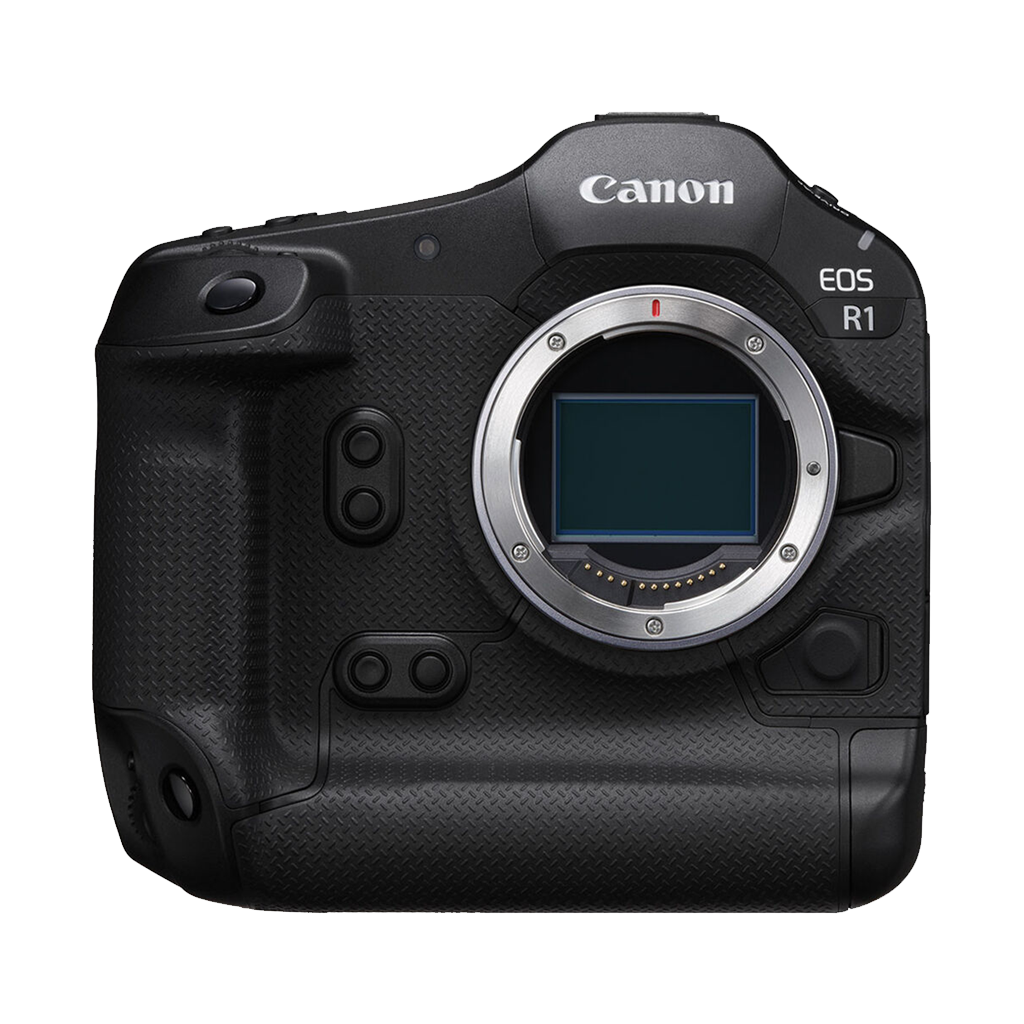
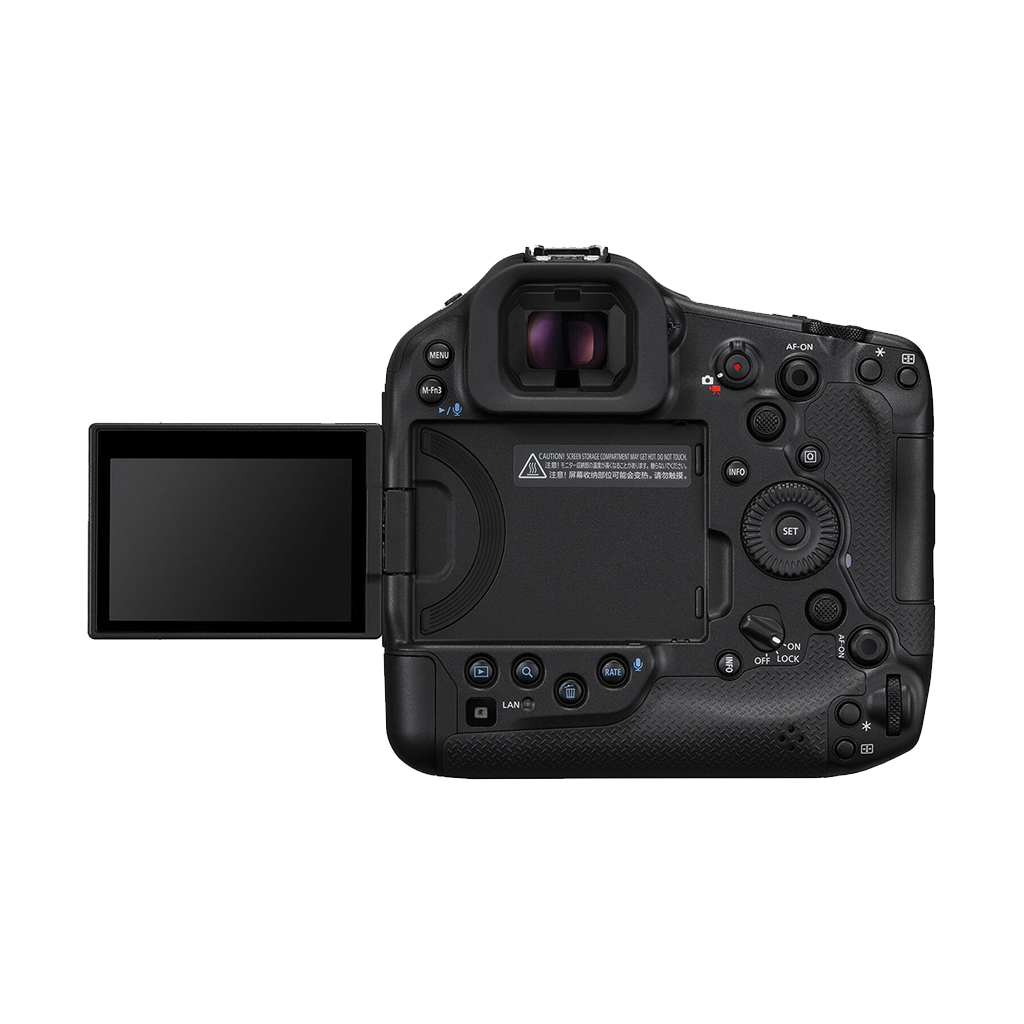
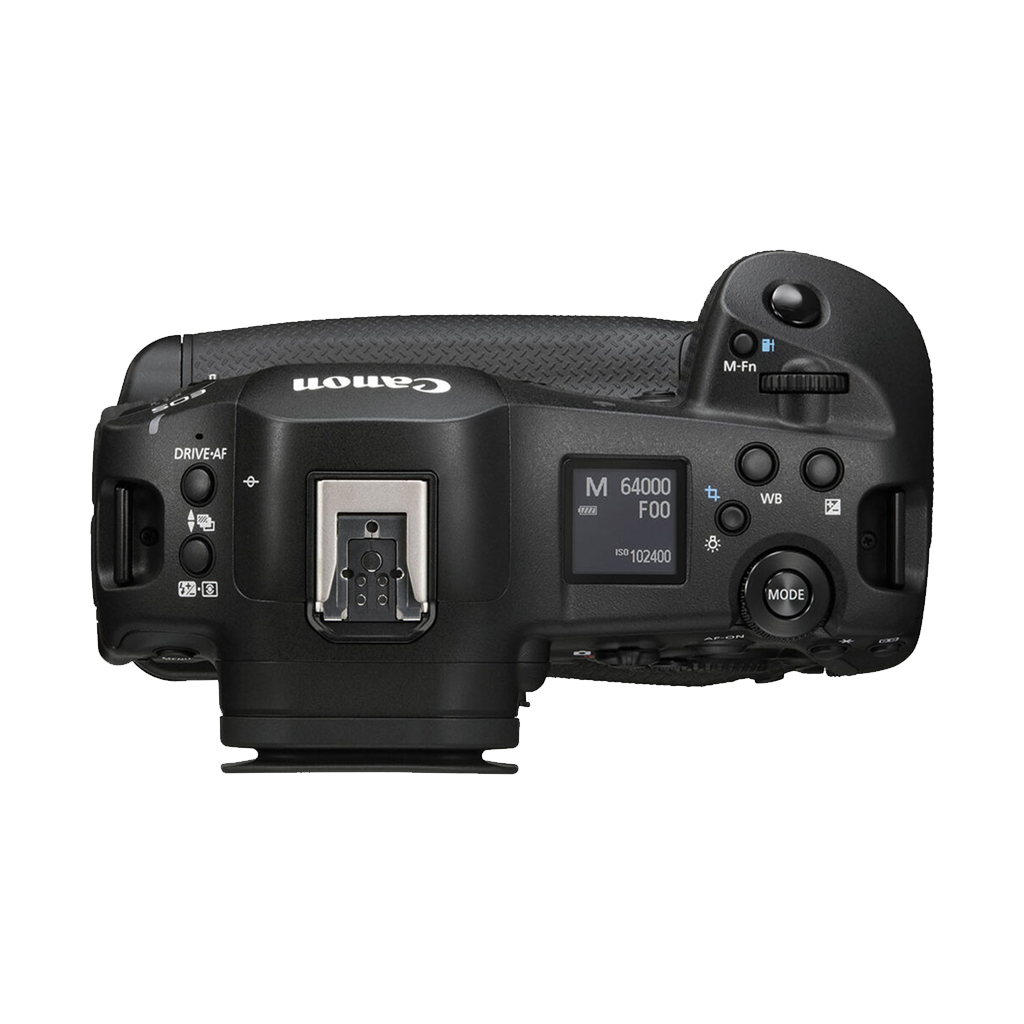
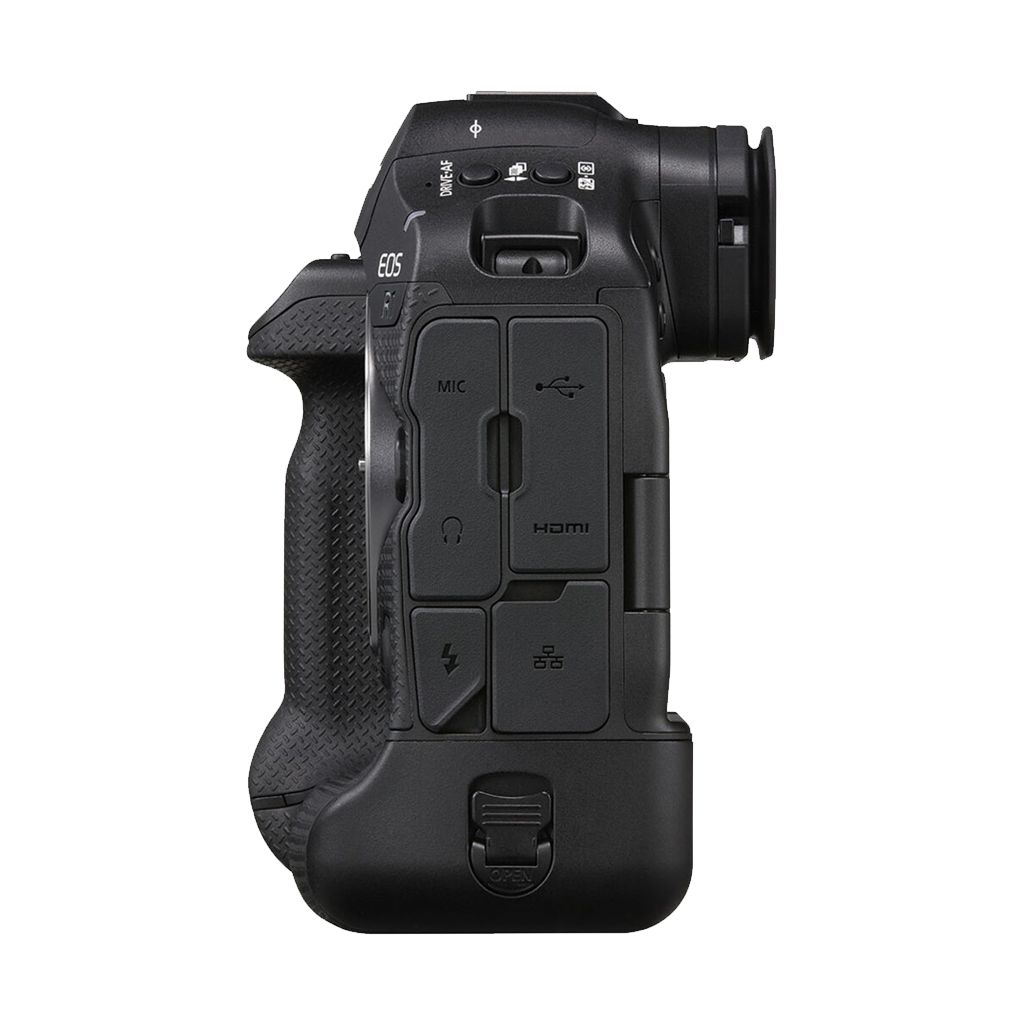
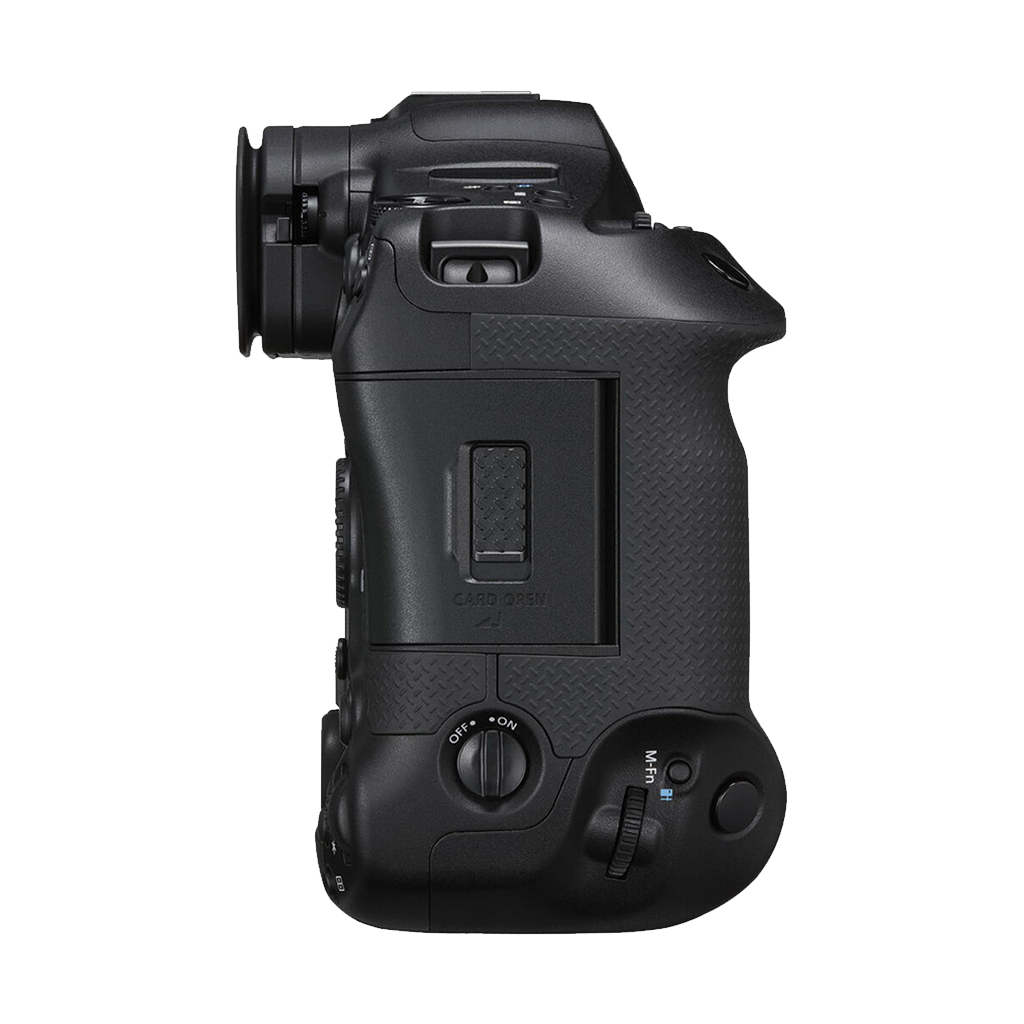
Canon EOS R1 Mirrorless Camera Body
Choose PayGate at checkout for MobiCred Payments.
- 24MP Full-Frame Stacked BSI CMOS Sensor
- DIGIC Accelerator + DIGIC X Processing
- Dual Pixel AF with Action Priority
- Improved Eye Control AF
- 6K 60 Raw & 4K 120 10-Bit Internal Video
- Up to 40 fps, Pre-Continuous Shoot Mode
- 9.44m-Dot 0.9x EVF, OVF Sim. View Assist
- 3.0" 2.1m-Dot Vari-Angle Touchscreen LCD
- Vertical Grip, 2x CFexpress Type B Slots
- Wi-Fi 6E, 2.5G Base-T Wired Ethernet
Orms Bellville
Orms Cape Town
Canon EOS R1 Mirrorless Camera Body
Orms Bellville
Ground Floor, Tygervalley Chambers 2, 27 Willie Van Schoor Avenue
Bellville
Bellville
Western Cape
7530
South Africa
Orms Cape Town
Shop 5, Roeland Square, Roeland Street
Gardens
Cape Town
Western Cape
8001
South Africa
Choose options
Choose PayGate at checkout for MobiCred Payments.
- 24MP Full-Frame Stacked BSI CMOS Sensor
- DIGIC Accelerator + DIGIC X Processing
- Dual Pixel AF with Action Priority
- Improved Eye Control AF
- 6K 60 Raw & 4K 120 10-Bit Internal Video
- Up to 40 fps, Pre-Continuous Shoot Mode
- 9.44m-Dot 0.9x EVF, OVF Sim. View Assist
- 3.0" 2.1m-Dot Vari-Angle Touchscreen LCD
- Vertical Grip, 2x CFexpress Type B Slots
- Wi-Fi 6E, 2.5G Base-T Wired Ethernet
Choose PayGate at checkout for MobiCred Payments.
- 24MP Full-Frame Stacked BSI CMOS Sensor
- DIGIC Accelerator + DIGIC X Processing
- Dual Pixel AF with Action Priority
- Improved Eye Control AF
- 6K 60 Raw & 4K 120 10-Bit Internal Video
- Up to 40 fps, Pre-Continuous Shoot Mode
- 9.44m-Dot 0.9x EVF, OVF Sim. View Assist
- 3.0" 2.1m-Dot Vari-Angle Touchscreen LCD
- Vertical Grip, 2x CFexpress Type B Slots
- Wi-Fi 6E, 2.5G Base-T Wired Ethernet
The Canon EOS R1 Mirrorless Camera allows any professional sports, news, or action photographer to shoot career-changing work with speed and advanced technologies at its core. The 24.2MP Full Frame Back-Illuminated Stacked CMOS Sensor along with the DIGIC Accelerator and DIGIC X Image Processor produces exceptional image quality, speed and low light performance.
The Canon EOS R 1 Mirrorless Camera features deep learning and Cross-Type AF that identifies and track your subjects with exceptional precision. Also, with Next-Generation Eye Control AF areas can be selected by just looking at the subject. Action Priority detects players in sports, and instantly responds to specific actions.
Customisable continuous shooting speeds of up to 40fps allow you to capture fast-moving action. While the groundbreaking stacked sensor enables a 1/64000 sec top shutter speed with virtually no rolling-shutter distortion.
Canon EOS R1 Mirrorless Camera is capable of shooting up to 6K video with frame rates of up to 60p using a wide variety of frame rates. Dual Shooting allows you to simultaneously capture 17MP (16:9) stills while shooting Full HD Video.
Wi-Fi 6Ei with MIMO antennas, and 2.5G BASE-T ethernet, deliver stable performance allowing you to get files quickly and efficiently between your Canon R1 and your client.
Image Stabilisation of up to 8.5-stops reduces the appearance of camera shake while shooting handheld or at lower shutter speeds in handheld positions. The 9.44m-dot electronic viewfinder (EVF) offers best-in-class performance with in-camera upscaling and noise reduction.
Stacked Sensor and DIGIC Accelerator
24.2MP Full-Frame Sensor and Continuous Shooting
The Canon EOS R1 Mirrorless Camera is built for speed with the newly designed 24.4MP full-frame back-illuminated stacked sensor offering impressively fast readout speeds and continues shooting of up to 40fps with electronic shutter, along with blackout-free viewing and greatly reduced rolling shutter distortion.
The new DIGIC Accelerator with its back-illuminated design assists in producing high-quality imagery with exceptional sharpness. Native Sensitivity up to ISO 102400 along with Neural Network Noise Reduction for notably clean files when working in low light conditions.
Continuous and Pre-Continuous Shooting
To ensure you capture the perfect shot, the 40fps shooting rate can be combined with Pre-Continues shooting, here 20 frames over a 0.5-second period are recorded when the shutter button is half-pressed. On the R1, you can also use the mechanical shutter that supports continuous shooting up to 12 fps.
In-Camera Upscaling
Now available in the Canon EOR R 1 Mirrorless camera is In-Camera Upscaling for when. In this process, deep learning is used to double the number of pixels both horizontally and vertically to produce a separate 96MP image in about 10 seconds. Upscaling can be done straight after the shot, or it can be done when cropping the image in the camera.
DIGIC Accelerator and DIGIC X Processing
Complementing the DIGIC Accelerator front-engine processor, is the proven DIGIC X processor. The DIGIC Accelerator is responsible for many of the continuous shooting, subject detection and tracking, and autofocus capabilities, allowing the DIGIC X to serve fully as an image processor. This combination allows the R1 to process large volumes of data and perform simultaneous tasks at high speeds, and assists in the quality and accuracy of deep learning features, like IN-Camera Upscaling and Neural Network Noise Reduction.
- Auto-Exposure and Auto White Balance Modes use Deep Learning
- 6144-zone exposure metering for high accuracy in various lighting conditions
- Coordinated Image Stabilization pairs IBIS with Lens-Based IS
- Supports Anti-Flicker and High-Frequency Anti-Flicker shooting
Sensor-Shift Image Stabilization
The Canon EOS R1 Mirrorless Camera Body employs a well-rounded image stabilisation system where three stabilisation methods are used. These include:
In-Body Sensor Shift: the 5-axis sensor-shift system is compatible with all lenses and assists in reducing camera shake in a general sense for a sharper image especially when shooting handheld at lower shutter speeds.
Coordinated Control IS: Stabilisation of up to 8.5 stops is provided when paired with a RF lens with Image Stabilisation in the centre of the frame and 7.5 stops at the periphery.
Movie Digital IS: Especially for video shooting, the electronic stabilisation system helps suppress blur in the peripheral areas to better enable shooting video handheld.
Next-Generation Autofocus
Dual Pixel Intelligent AF
Further incredible speed, the Canon R1 also features notable autofocus performance. The AF system is optimised to detect, track and maintain focus on moving subjects across the frame. The Dual Pixel system is fine-tuned with many assets to make this the camera with the best autofocus performance in the EOS range. Some features include:
Cross-type Dual Pixel AF provides a more reactive and accurate focusing performance. Especially in linear backgrounds like window blinds, plank or brick walls and other patterned backgrounds.
Focusing is possible down to -7.5 EV for stills and -5.5 EV for video working in very low-light conditions.
People, Animals, and Vehicles are tracked automatically by the 4897-point phase-detection system. The eye detection system here also features the ability to prioritise left or right eyes.
Action Priority + Subject Detection and Tracking
Action Priority built into the DIGIC Accelerator is specifically designed for sports and action. Herewith specific actions and movements are recognised to initiate Action Priority, these include motions like, taking a shot, jumping, making a pass, and many more.
At the moment only certain sports can be recognised, by analysing certain objects like the ball, joints, torso, and head information for tracking. The mode can recognize specific subjects and uses this information in conjunction with recognized movements to determine where to focus in the scene while the action is unfolding. Action priority can be assigned to a custom button for easy On/Off toggling.
Pre-Registered Person Priority allows you to register up to 10 persons in-camera to prioritise and focus on tracking among many other different people. Focus on the subject is still kept, even when obscured by other subjects in the frame.
Eye Control AF
Similar to the R3 the Canon EOS R1 employs the unique Eye Control AF, this allows you to simply look where you want the focus to be and have the AF Area automatically move there when the AF activation button is pressed.
Eye Control AF is improved in the EOS R 1 being 2x faster in detecting and advanced line-of-sight detection algorithm. Further, greater tolerance is given to different eyelid thicknesses, eyelash length, how the camera is held, and also now when wearing eyeglasses.
Professional Reliability and Design
9.44m-Dot OLED EVF and Rear LCD
The viewfinder in the R1 is the best viewfinder in an EOS R-Series to date, with an impressive 9.44m-dot OLED EVF with a massive 0.9x magnification for comfortable, clear, and bright eye-level viewing conditions.
When working in extreme temperatures and humidity, some of the EVF optics are sealed within an airtight structure, these include:
- EVF features a 9.44m-dot OLED panel that is 3x brighter than the EVF of the EOS R3
- OVF Simulation View Assist function mimics the rendering and brightness of an optical finder, helping to better assess scene brightness in mixed lighting conditions.
- In addition to the viewfinder, there is also a rear 3.0" 2.1m-dot touchscreen LCD that features a vari-angle design to better support working from high and low angles.
Built for the Professional Image-Maker
The Canon EOS R1 Mirrorless Camera features a magnesium alloy exterior that is dust and water-resistant with full protective sealing around all seams and behind each button. A vertical grip is built into the R 1 to improve ergonomics and easier to hold through a full day of shooting. The grip also features an improved rubber making it more comfortable and providing greater traction while holding.
Dual CFexpress Type B card slots support high speed, high bit-rate recording modes as well as proxy recording and file type separation for easier post-production workflow. Dual Shooting allows you to simultaneously capture 17MP JPEG (16:9) stills while shooting Full HD 30p Video.
Versatile Connectivity
Designed ground up, as a professional flagship workhorse, the Canon EOS R1 can be easily be introduced to an existing workflow where for example additional recorders can be added, tether via ethernet, external strobes added, or offload of files for FTP can be done.
You will find a full-sized HDMI port for outputting video to your external recorder or monitor. With the USB 3.2 Geb 2 Type-C port data can be transferred and the battery can be charged in the battery. The Ethernet port supports 2.5GBASE-T wired LAN connection for transferring files over FTP.
A Multi-Function Shoe features an additional row of pins at the front for greater accessory mounting and provides power to select accessory types that normally require additional batteries to be powered.
Wi-Fi 6E/Wi-Fi 6 and Bluetooth Low Energy are supported for wireless transferring and control. Along with image.canon and Frame.io support.
Video Capabilities and Cinema EOS Integration
6K Raw and 4K Video
Further the Canon EOS R1 Mirrorless Camera's impressive capabilities in terms of still capture, provide strong video features that seamlessly integrate the EOS r1 into Cinema EOS workflow. Supporting up to 6K 60p raw recording or 4K 60p MP4 recording using a 6K oversampling area with 10-bit 4:2:2 sampling.
Proxy recording is possible to help in post-production by splitting two separate recording formats into the two card slots. As an example, you can record 6K60p raw to one card and a DCI 2K 60p MP4 version to the other. So you can edit and grade the lower bit-rate footage and then apply your edits to the higher bit-rate version when finishing.
- 6K 60p raw internal recording using full sensor width
- 4K 60p normal LGOP recording for approximately 120 minutes
- 4K 120p and FHD 240p high-speed recording options
- Raw and XF-HEVC S/XF-AVC S formats
- In-camera custom picture profiles include Canon Log2, 3, PQ, and HLG
- Full-size HDMI Type-A for external recording
- False colour, zebra display, and tally lamp functions
- LPCM 24-bit/4-channel audio
- Canon EOS R1 Mirrorless Camera Body
- Canon LP-E19 Lithium-Ion Battery
- Canon LC-E19 Charger
- Canon ER-i Eyecup
- Canon R-F-5 Camera Cover
- Canon Camera Strap ER-L1
- Canon ER-SC3 Shoe Cover
- Canon IFC-100U Interface Cable
- Canon Power Cable with Cable Protector
| Lens Mount | |
| Sensor Resolution | |
| Image Sensor | |
| Sensor Crop (35mm Equivalent) | |
| Image Stabilization | |
| Built-In ND Filter | |
| Capture Type |
| Shutter Type | |
| Shutter Speed | |
| Bulb/Time Mode | |
| ISO Sensitivity Range | |
| Metering Method | |
| Exposure Modes | |
| Exposure Compensation | |
| Metering Range | |
| White Balance | |
| Continuous Shooting | |
| Interval Recording | |
| Self-Timer |
| Image Sizes | |
| Aspect Ratio | |
| Image File Format | |
| Bit Depth |
| Internal Recording Modes | |
| External Recording Modes | |
| Fast-/Slow-Motion Support | |
| Gamma Curve | |
| Recording Limit | |
| IP Streaming | |
| Built-In Microphone | |
| Audio Recording |
| Media/Memory Card Slot | |
| Video I/O | |
| Audio I/O | |
| Power I/O | |
| Other I/O | |
| Wireless | |
| Mobile App Compatible |
| Display Size | |
| Resolution | |
| Display Type | |
| Secondary Display |
| Type | |
| Size | |
| Resolution | |
| Eye Point | |
| Coverage | |
| Magnification | |
| Diopter Adjustment |
| Focus Type | |
| Focus Mode | |
| Autofocus Points | |
| Autofocus Sensitivity |
| Built-In Flash/Light | |
| Maximum Sync Speed | |
| Flash Compensation | |
| Dedicated Flash System | |
| External Flash Connection |
| Operating Temperature | |
| Operating Humidity |
| Battery Type | |
| Shoe Mount | |
| Tripod Mounting Thread | |
| Material of Construction | |
| Dimensions (W x H x D) | |
| Weight |

